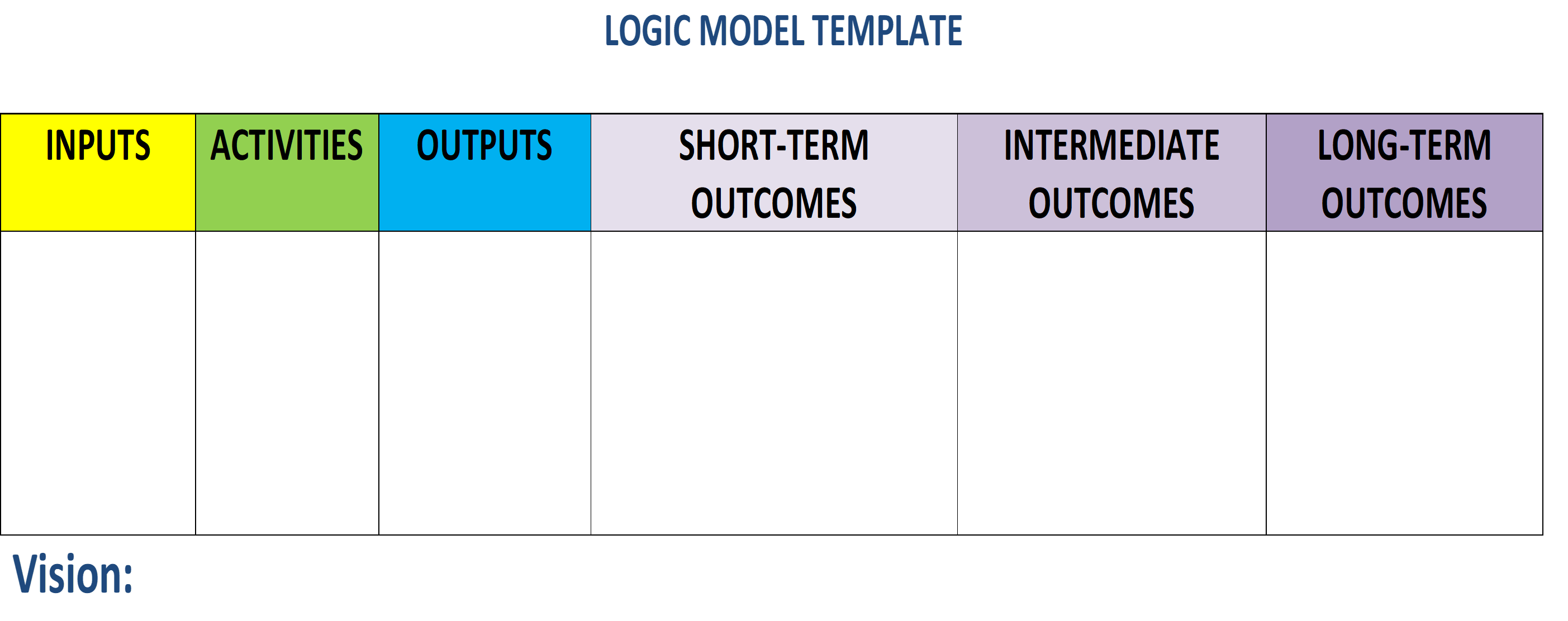
Describing Your Program – the Infamous Logic Model
Most people have heard about or seen a program logic model. When they hear the term logic model, some people get that feeling in the pit of their stomach because they’re not sure what it means or how to put one together. Others attempt to craft a model but may not fully grasp the components.
Logic models are just a visual description of your program – what you do and who you do it for (your activities and your intended audience), what it requires to do what you do (your inputs), what happens when you implement your activities (outputs) and why you do what you do (your short, intermediate and long-term outcomes). Logic models are used to guide both your program and your evaluation – what you will measure to assess how well your program is achieving its’ intended outcomes.
The key to ensuring that your logic model accurately depicts your program is to develop it collectively with all program stakeholders. While one person may believe the goal is to enhance health, another may feel it is to empower individuals and build community. Having a shared understanding of the program and its intended impacts is key to success. The steps to developing a logic model are as follows:
Use the template above and start with the long-term outcomes and work backwards to the inputs (e.g. go from right to left).
Long-term outcomes are your “pie in the sky” goals. For example, cure breast cancer, reduce teen pregnancy. Long-term outcomes are not something you’re going to be able to achieve or measure anytime soon or perhaps ever. To identify what your long-term outcome is, ask yourself:
- If we really got it right, what would it look like in 10 or 20 years?
- If our organization were operating at our very best, what would we be achieving.
Intermediate outcomes are changes in behaviors, practices, policies, etc. Sometimes you will be able to measure these; other times you may not (e.g. if it’s a one year grant). To identify your intermediate outcomes, ask yourself:
- What changes would we expect to see in the behaviors/actions of those you serve?
- What will the people we serve do differently?
- What changes in programs, policies, and practices are necessary to reach our vision?
- If we have reached our “vision,” what has changed to allow that?
Your short-term outcomes are changes in knowledge, skills and beliefs that can generally be achieved and measured. To identify the short-term outcomes, ask yourself:
- What changes in knowledge and attitudes would we expect to see in the groups we serve?
- What changes would we expect in the next year if we are heading in the right direction?
Once you have figured out what you expect to have happen because of your program, you need to determine what you do or need to do that will lead to those changes. Discuss and ask yourself:
- What do we need to do to create the changes we have just discussed?
- What new or different activities would it take to create change?
- What must be undertaken to make this change possible?
- Who do we serve or help, both directly and indirectly?
- Who benefits from our work in the community?
Most people are very good at determining the outputs (things we can count) that result from the activities they provide. While they are important, it’s very critical that you move beyond outputs to outcomes. Once you have determined your activities and your intended audiences, ask yourself:
- What can we ‘count’ when we successfully do the ‘activities’ we just talked about?
- How many do we serve and what do we provide them?
The last step in the logic model is identifying the resources you need to make your program and the intended outcomes happen. Ask yourself:
- What do we have and what do we need to make this happen?
- What will it cost our program/organization to offer the activities we just discussed?
Try this approach with your programs. If you need assistance developing your logic model or would like feedback on your model, feel free to contact me at jenn@highlandnonprofitconsulting.com. I think creating and refining logic models is fun!

No Comments